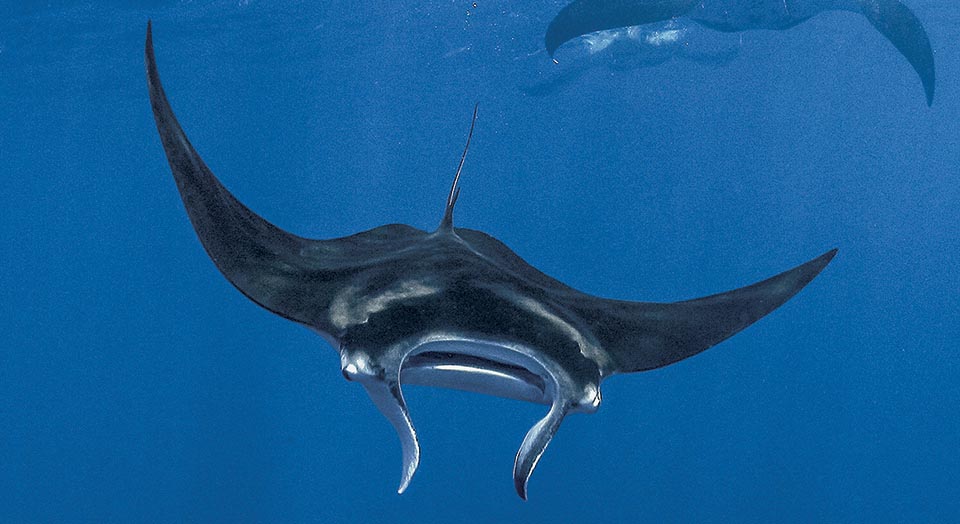Reef Manta Ray
Looking like the ultimate caped crusader—courtesy of the triangular pectoral fins that dominate its disc-shaped body—and able to leap spectacularly into the air, the reef manta ray seems like something out of a Hollywood blockbuster.
 Their ability to “fly” is even more impressive because reef manta rays are incredibly large animals—the second largest species of ray in the world—sometimes weighing more than a ton. Scientists speculate these rays leap up from the water and land with a loud slap for a variety of reasons, including ridding themselves of parasites and suckerfish and communicating their whereabouts to other rays. Or maybe it’s just for fun.
Their ability to “fly” is even more impressive because reef manta rays are incredibly large animals—the second largest species of ray in the world—sometimes weighing more than a ton. Scientists speculate these rays leap up from the water and land with a loud slap for a variety of reasons, including ridding themselves of parasites and suckerfish and communicating their whereabouts to other rays. Or maybe it’s just for fun.
Unfortunately, their size, along with slow swimming speeds and a preference for shallow waters, make reef manta rays easy targets for fishermen and highly vulnerable to accidental entanglement in fishing nets. They are also now hunted at higher rates for Chinese markets because of the mistaken belief that their gill plates possess medicinal benefits.
This demand, combined with human disturbance from divers, climate change and habitat destruction, makes the reef manta ray extremely vulnerable to population decline. The global population is believed to be down as much as 30 percent.
Without significant improvements in conservation efforts, soon the screen may be the only place left to see this mantled marine wonder.
–Rebecca Bullis
Making a Difference
Defenders continues to push for greater protection for the reef manta ray. We petitioned the National Marine Fisheries Service in 2015 to protect both the giant and reef manta rays under the Endangered Species Act. Unfortunately, it denied the reef manta ray for further consideration.
Mantas reproduce slowly and don’t breed until they are 15 and then have only one or two pups every two to five years. Even with the strictest protections, it will take decades for them to recover.
For more, visit defenders.org/mantarays


